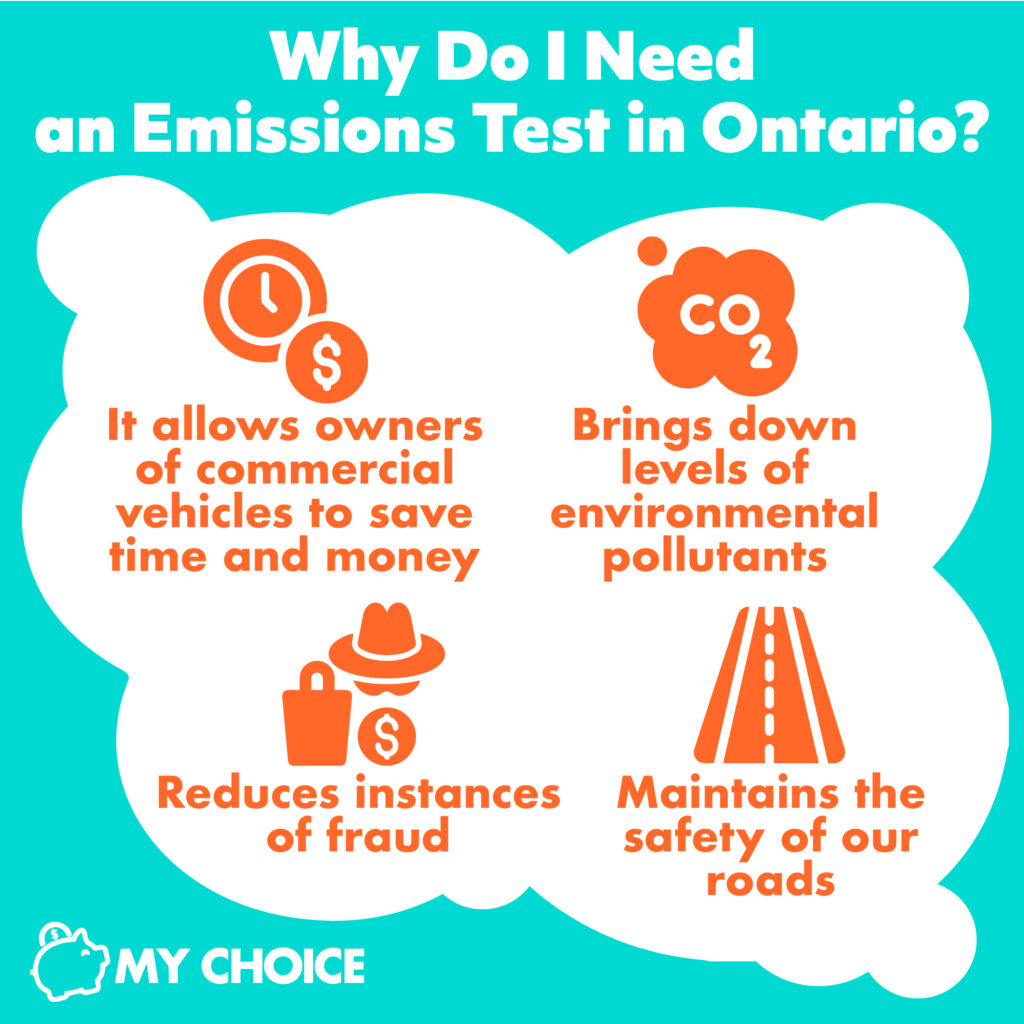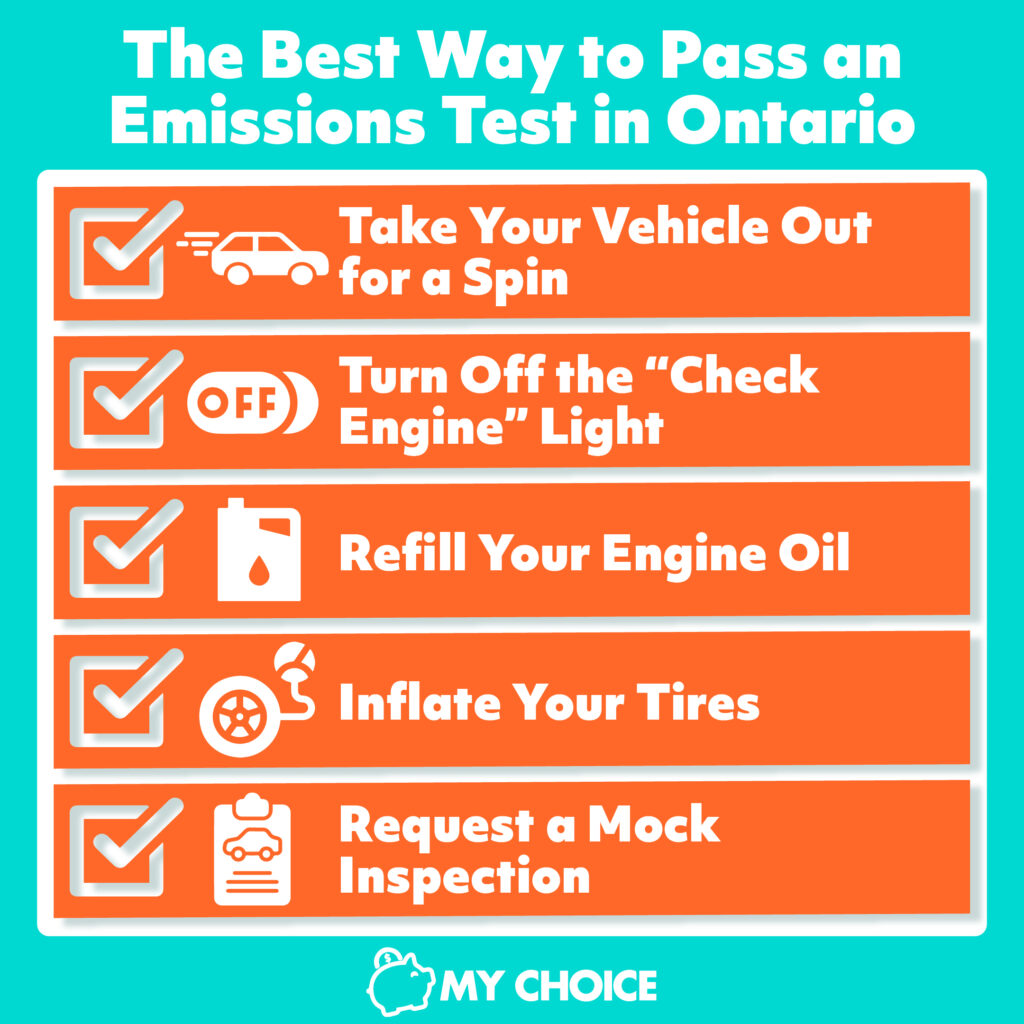
In Ontario, vehicle emissions testing used to be mandatory for all vehicles seven years and older. But, since 2019, the government has relaxed its rules on who needs to undergo testing.
Here, we discuss why and when you should get an emissions test, as well as answer some other oft-asked questions, including what kinds of vehicles require emission testing and what year cars need emissions testing in Ontario.
What Is an Emissions Test?
An emissions test is a procedure done to gauge whether a vehicle adheres to the emission standards set by the province of Ontario.
Emissions tests typically check the levels of the following chemical compounds in your vehicle’s exhaust:
- Benzene (C6H6)
- Carbon monoxide (CO)
- Carbon dioxide (CO2)
- Hydrocarbons (HC)
- Oxygen (O2)
- Nitrogen oxides (NOx)
- Sulphur dioxide (SO2)
Why Do I Need an Emissions Test in Ontario?
Emissions tests are done to regulate how much pollutants are released into the air. The goal is to reduce air pollution and, ultimately, keep Ontarians and their environment safer and healthier.
Emissions testing in Ontario began in 1999 when the government unveiled its Drive Clean initiative. Under this program, all vehicles that were seven years and older were required to undergo emissions testing. Failing the test meant that drivers were not allowed to renew their vehicle registration and license plates.
20 years later, the Ontario government retired the Drive Clean movement in 2019 following criticisms of inefficiency and unnecessary expenses to taxpayers. Over those two decades, technological advancements have allowed car manufacturers to create better, cleaner engines – negating the necessity of the program for light vehicles.
Today, the Ontario government conducts emissions testing and safety inspections through the DriveON program, which is designed specifically for commercial motor vehicles using heavy diesel. According to the Ontario government website, the program is meant to:
- Allow owners of commercial vehicles to save time and money
- Reduce instances of fraud
- Bring down levels of environmental pollutants
- Maintain the safety of our roads
Light-duty vehicles such as cars, SUVs, and small trucks are not required to undergo emissions testing under this program.

When Do I Need an Emission Test in Ontario?
As mentioned above, you will need to undergo an emissions test in Ontario if you drive a heavy-duty diesel-run commercial vehicle that weighs 4,500 kilograms and over and if that vehicle is seven years old or older.
All car owners with these vehicle types who are looking to renew their license plate and sticker are required to undergo emissions testing once a year. Additionally, those registering as new owners of the aforementioned types of vehicles are also required to undergo testing.
The Ontario government will send you a renewal notice in the mail once per year. You may also be stopped and subjected to an inspection by an enforcement officer anywhere in the province if:
- Your vehicle is believed to be producing excessive exhaust; and/or,
- they find that your emission control equipment was removed or tampered with
Vehicles that don’t comply with Ontario’s emissions standards will be subject to compliance or enforcement action. This could mean facing verbal warnings or fines.
How Much Is an Emission Test in Ontario?
In the past, the auto emissions test used to be free if you passed. If you failed, you had to cover a $30 fee. Since 2017, however, the $30 fee for light-duty vehicles (this includes small cars, vans, SUVs, and light trucks) has been eliminated.
What to Expect at an Ontario Emissions Test Check
Ontario emissions tests for heavy-duty diesel-run commercial vehicles typically take between 15 to 30 minutes and involve the following procedures:
Pre-test Check
The pre-test is a visual exam performed by a technician. Typically issues that technicians may find during the pre-test check include:
- Emissions that are visible for over five straight seconds
- A missing or improperly fitting gas cap
- An exhaust system leak
- A failing or maladjusted motor governor
- A missing vehicle identification number (VIN) or one that is different from the one noted in your permit
- Data link connector issues
During the pre-test, the technician also determines whether the emissions test may cause any significant risks to your or others’ safety as well as any potential damage to the center’s equipment or property and the driver’s motor vehicle.
Opacity Test
An opacity test measures how opaque your vehicle’s emissions are. A vehicle passes an opacity test if it stays below the maximum allowable opacity percentage for its model year:
- Heavy diesel vehicles released in 2008 and onwards: Must have an opacity percentage of no more than 20%
- Vehicles released from 1991 to 2007: Must have a maximum opacity percentage of 30%
- Vehicles released before or in 1990: Must have no more than 40% opacity
- School buses: Must have a maximum opacity percentage of 30%
On-board Diagnostic System Test
This is usually done for vehicles weighing 4,500 to 6,350 kilograms. The purpose of this test is to identify if the emission control systems work as intended. Failure to pass the diagnostics test means that you fail your emissions test and cannot renew your license plates and registration.
The Best Way to Pass an Emissions Test in Ontario
If you want to improve your chances of passing your emissions test, consider the following tips:
Take Your Vehicle Out for a Spin
Your catalytic converter can get choked up and collect all kinds of material. If you don’t want to manually clean it out, you can take your vehicle out on the highway and drive at high speed – this will heat up the catalytic converter and clear most of the deposit. Make sure to do this a couple weeks before your emissions testing appointment.
Additionally, make sure to warm your car up at least 20 minutes before arriving at the emissions testing center. This is because your coolant fluids, oil, and catalytic converter reach the ideal cooling temperature after driving about 15 to 25 kilometres.
Turn Off the “Check Engine” Light
The check engine light is triggered by a range of issues, including a faulty or loose gas cap, a faulty catalytic converter, damaged spark plugs, a dirty mass airflow sensor, a failing oxygen sensor, transmission damage, cooling system issues, contaminated engine oil, and other emissions problems.
If your check engine light is on, you may not even get past the pre-test check.
Refill Your Engine Oil
Old and dirty oil can affect the temperature at which your engine runs. When your engine runs hotter due to old oil, it will increase your vehicle’s emissions. Dirty, contaminated oil also affects the efficiency of your engine.
Inflate Your Tires
Low tire pressure can result in lower fuel efficiency. When this happens, you could put a strain on your engine and cause it to produce more harmful emissions than usual.
Request a Mock Inspection
You can get a mock inspection from a third-party service provider to check for any potential issues you may encounter at your emissions test. That way, if you fail the initial test, you’ll have ample time to address any issues that’ll get in the way of your passing grade.

The Bottom Line
While emissions testing used to be mandatory for all types of vehicles seven years and older, a recent change in regulation means that light-duty vehicles no longer have to get tested in Ontario. However, those who drive heavy diesel commercial motor vehicles with a gross weight of over 4,500 kilograms are still required to undergo testing annually.








